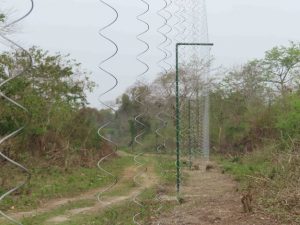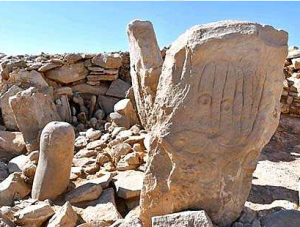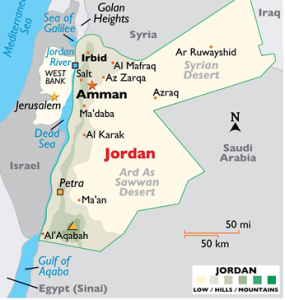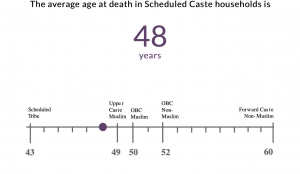DAILY CURRENT AFFAIRS (FEBRUARY 24, 2022)
THE INDIAN POLITY AND GOVERNANCE
1.‘LAKSHYA ZERO DUMPSITE’
THE CONTEXT: Ministry of Housing and Urban Affairs has approved proposals worth ₹28.5 crores submitted by the UT for remediating 7.7 lakh MT of waste in Daddumajra dumpsite.
THE EXPLANATION:
This initiative is set to give residents of Chandigarh respite from diseases and the foul smell of garbage and will ensure that the city is on its way to remediate its legacy waste and become 5-Star Garbage Free in the coming period of time.
- The ‘Heritage City’ of Chandigarh, founded in 1953 and planned by famous Swiss-French architect Le Corbusier, stands out for its immaculate urban planning and design. The city is renowned for its open public spaces, adequate green covers, and strict norms for residential and commercial zones that have preserved the sanctity of the city.
What is the need?
- The city generates 521 metric tonnes (MT) of waste every day, mostly consisting of horticultural waste due to the wide spread green cover across 1,800 parks, and processes the same into 4,000 quintals of compost annually.
- The city has been certified as 1-Star Garbage Free in the recently concluded Star Rating Assessment for Garbage Free Cities in 2021, under the aegis of Swachh Bharat Mission-Urban 2.0. It was also recognized for its commitment to transform ‘manhole to machine hole’ by winning the ‘Best Performing UT’ inSafaiMitra Suraksha Challenge 2021.
- For decades, the city’s waste would travel to the Daddumajra dumpsite which is now estimated to hold around 7.7 lakh MT of legacy waste. As part of Swachh Bharat Mission-Urban 2.0, the UT has pledged to achieve ‘Lakshya Zero Dumpsites’ within the Mission period and has undertaken the challenge of remediating the 7.7 lakh (MT) of legacy waste lying across 8 acres of land as part of the Daddumajra dumpsite.
- The land captured by Chandigarh’s largest and only dumpsite is valued at around ₹80 crores and efforts are now underway to completely remediate the dumpsite and provide a healthier future to the residents of the city.
2. DRAFT INDIA DATA ACCESSIBILITY & USE POLICY, 2022
THE CONTEXT: The Ministry of Electronics and Information Technology (MEITY) on February2022 released a policy proposal titled as, “Draft India Data Accessibility & Use Policy, 2022”.
THE EXPLANATION:
About “Draft India Data Accessibility & Use Policy, 2022”:
Aim: To “radically transform India’s ability to harness public sector data”. The proposals of the Draft Data Accessibility Policy has been in the spotlight for permitting the licensing and sale of public data by the Government to the private sector.
Highlights of the Draft Policy:
- Commercial Use: The policy will be applicable to all data and information created/generated/collected/achieved by the government directly or through authorised agencies by various ministries/departments/organisations/ agencies and autonomous bodies.
- Data Authority: Indian Data Office (IDO) will be constituted by the Ministry of Electronics and Information Technology (MeitY) to streamline and consolidate data access and share public data repositories across the government and other stakeholders.
- Consultative body: Indian Data Council (IDC) will comprise the IDO and data officers of five government departments. Its tasks will include defining frameworks for defining high-value datasets, finalizing data standards and metadata standards and reviewing the implementation of the policy.
- Database Integration: All central and state government bodies will have to compulsorily share data with each other to create a common “searchable database”. A data-sharing toolkit will be provided to ministries and departments to assess and manage risks associated with data sharing.
- The monetisation of Data: The datasets that have undergone value addition could be monetised by the government.
- Stakeholders: Start-ups, other enterprises, individuals and researchers will be able to access enriched data through data licensing, sharing and valuation within the frameworks of data security and privacy.
What are the privacy issues with the Draft Data Accessibility Policy?
- India does not have a data protection law that can provide accountability and remedy for privacy violations such as coercive and excessive data collection or data breaches. Here, inter-departmental data sharing poses concerns related to privacy since the open government data portal which contains data from all departments may result in the creation of 360 degree profiles and enable state-sponsored mass surveillance.
- Even though the policy considers anonymisation as a desired goal there is a lack of legal accountability and independent regulatory oversight. There is also a failure to consider scientific analysis and the availability of automated tools for the re-identification of anonymous data.
- The commercial value of the data increases with greater amounts of personal data.
THE ENVIRONMENT AND ECOLOGY
3. INDIAN RAILWAYS INSTALLING SOLAR FENCES TO SAVE ELEPHANTS
THE CONTEXT: Agricultural Engineering Department is planning to install hanging solar-powered fences. Though the concept is not new to the State, it will be carried out with a 40% back-ended subsidy to be provided to farmers willing to have such fences.
THE EXPLANATION:
The barrier, to be hung from a height of about 12 ft, is made up of hot-dip galvanised aluminium conductor steel reinforced wires, which are considered rust-free. This is said to be useful in protecting the fields against wild boar and bison attacks.
The cost varies depending upon the number of lines of the wire. For instance, wires with five lines are estimated to cost about ₹2.91 lakh, of which the government’s subsidy will cover around ₹1.16 lakh. If the number of lines is 10, the cost goes up to approximately ₹3.37 lakh, of which the subsidy component will be nearly ₹1.35 lakh.
Significance:
- While electrocution claimed the lives of 741 elephants, train hits led to the death of 186 pachyderms, followed by poaching (169) and poisoning (64).
- Karnataka and Odisha lost 133 elephants each to electrocution and Assam reported 129 deaths in the recent past. Among elephant casualties due to train hits, Assam stood first with 62 deaths, followed by West Bengal at 57. A total of 169 elephants were killed by poachers in the 10 years and Odisha reported the highest of 49, fol-lowed by Kerala 23. Assam reported the highest number of elephants poisoned, 32, and Odisha stood second with 15.
- According to the Ministry, India had a total of 29,964 wild elephants as per an esti-mate done in 2017. The southern region comprising Tamil Nadu, Kerala, Karnataka, Andaman and Nicobar Islands, Andhra Pradesh and Maharashtra accounted for the highest population — 14,612 elephants.
4. NUEVA PESCANOVA: WORLD’S FIRST OCTOPUS FARM
THE CONTEXT: A Spanish company plans to open the first commercial octopus farm in 2023, but as scientists discover more about the enigmatic animals, some have warned it could be an ethical and environmental disaster.
THE EXPLANATION:
- Nueva Pescanova, the company pouring 65 million euros ($74 million) into the farm, which is pending environmental approval from local authorities.
- The commercial incentives for the farm, which is slated to produce 3,000 tonnes per year by 2026 for domestic and international food chains and generate hundreds of jobs on the island of Gran Canaria.
- Between 2010 and 2019 the value of the global octopus trade ballooned to $2.72 billion from $1.30 billion, according to data from the UN Food and Agricultural Organisation, while landings only rose around 9% to 380,000 tonnes.
- Despite increasing concern for animal rights, demand is booming, led by Italy, Korea, Japan and Spain, the world’s biggest importer. Natural fishing grounds are feeling the strain.
- However, previous efforts to farm octopus have struggled with high mortality, while attempts to breed wild-caught octopus ran into problems with aggression, cannibalism and self-mutilation.
THE SCIENCE AND TECHNOLOGY
5. NASA’S RETIREMENT PLAN FROM SPACE STATION
THE CONTEXT: According to a NASA’s press release, NASA plans to retire the International Space Station at the end of 2030 and crash it into the Pacific Ocean in an area called Point Nemo.
THE EXPLANATION:
For over two decades, the International Space Station (ISS) has been orbiting Earth at a speed of about eight kilometres per second, while an international crew of astronauts and cosmonauts onboard conducted ground-breaking scientific investigations that have thrown open the doors for deep space exploration.
What is International Space Station?
- The International Space Station is a large spacecraft in orbit around Earth. It serves as a home where crews of astronauts and cosmonauts live. The space station is also a unique science laboratory. Several nations worked together to build and use the space station. The space station is made of parts that were assembled in space by astronauts.
- It orbits Earth at an average altitude of approximately 250 miles. It travels at 17,500 mph. This means it orbits Earth every 90 minutes. NASA is using the space station to learn more about living and working in space. These lessons will make it possible to send humans farther into space than ever before.
What’s next for the ISS?
According to NASA, once it retires, the ISS will be replaced by “one or more commercially-owned and -operated” space platforms. “The private sector is technically and financially capable of developing and operating commercial low-Earth orbit destinations, with NASA’s assistance.
What about India’s Space Station?
According to the ISRO, India will launch its first indigenously made space station by 2030, just a few years after the ‘Gaganyaan’ mission which will kick off starting 2022.
THE PT PERSPECTIVE
6. THE STRATEGIC LOCATION OF GOLAN HEIGHTS
The Golan Heights are a fertile plateau of around 1,300 sq km area lying to the north and east of the Sea of Galilee, which Israel seized from Syria during the Six-Day War of 1967, and has occupied ever since.
The inhabitants
Around 50,000 people are estimated to live on the Golan, divided almost equally between Israeli Jewish settlers and Arabic-speaking Druze people of Syrian origin, who follow a monotheistic Abrahamic religion related to Ismaili Shia Islam.
Significance:
- The heights give Israel an excellent vantage point for monitoring Syrian movements. The topography provides a natural buffer against any military thrust from Syria.
- Israel’s government says it also fears that Iran, an ally of Syrian President Bashar al-Assad, is seeking to establish itself permanently on the Syrian side of the border in order to launch attacks on Israel.
- The area is also a key source of water for an arid region. Rainwater from the Golan’s catchment feeds into the Jordan River.
7. THE 9,000-YEAR-OLD SHRINE FOUND IN JORDAN
THE CONTEXT: A team of Jordanian and French archaeologists found a roughly 9,000-year-old shrine at a remote Neolithic site in Jordan’s eastern desert.
THE EXPLANATION:
- The ritual complex was found in a Neolithic campsite near large structures known as “desert kites,” or mass traps that are believed to have been used to corral wild gazelles for slaughter.
- Such traps consist of two or more long stone walls converging toward an enclosure and are found scattered across the deserts of the West Asia.
- “It’s 9,000 years old and everything was almost intact.” Within the shrine were two carved standing stones bearing anthropomorphic figures.
MAPPING-PLACES IN NEWS
8. WHO ARE ANGADIAS?
The Angadia system is a century-old parallel banking system in the country where traders send cash generally from one state to another through a person called Angadia that stands for courier. It is by and large used in the jewellery business with Mumbai – Surat being the most popular route as they are two ends of the diamond trade.
The cash involved is huge and it is the responsibility of the Angadia to transfer cash from one state to another for which they charge a nominal fee. Generally, it is the Gujarati, Marwari and Malbari community that are involved in the business.
THE PRELIMS PRACTICE QUESTIONS
QUESTION OF THE DAY 24th FEBRUARY 2022
Q1. Consider the following statements:
- Israel does not share its border with Syria.
- Jordan does not share its border with Mediterranean Sea.
Which of the statements given above is/are correct?
- 1 only
- 2 only
- Both 1 and 2
- Neither 1 nor 2
ANSWER FOR 23rd FEBRUARY 2022
- Answer: D
Explanation:
Mission Shakti:
- It envisages a unified citizen-centric lifecycle support for women through integrated care, safety, protection, rehabilitation & empowerment to unshackle women as they progress through various stages of life.
- It has two sub-schemes ‘Sambal’ and ‘Samarthya’.
- ‘Sambal’ is for safety and security of women, the ‘Samarthya’ sub-scheme is for empowerment of women.
- The Sambal sub-scheme consists of the existing scheme of One Stop Centres (OSC), Women Helplines (181-WHL) and Beti Bachao Beti Padhao (BBBP). Besides, a new component of Nari Adalats has been added as women’s collectives to promote and facilitate alternative dispute resolution and gender justice in society and within families.
- The Samarthya sub scheme is for empowerment of women, consisting of existing schemes of Ujjwala, SwadharGreh and Working Women Hostel. In addition, the National Creche Scheme for children of working mothers and the Pradhan Mantri Matru Vandana Yojana (PMMVY), which have been under the Umbrella ICDS Scheme till now, are also subsumed in ‘Samarthya’.
- Answer: B
Explanation:
The iconic island Char Chinari in the middle of the Dal Lake in Srinagar:
- Recently, two tall chinar trees were planted on the picturesque island with the Zabarwan hills in the backdrop. This will be the second time in the past decade that chinar trees, which can survive for centuries, will be planted on the island.
- The 2014 floods left two mighty chinars damaged.
- The island, in fact, owes its name to chinar trees, as Char Chinarimeans four chinars.


